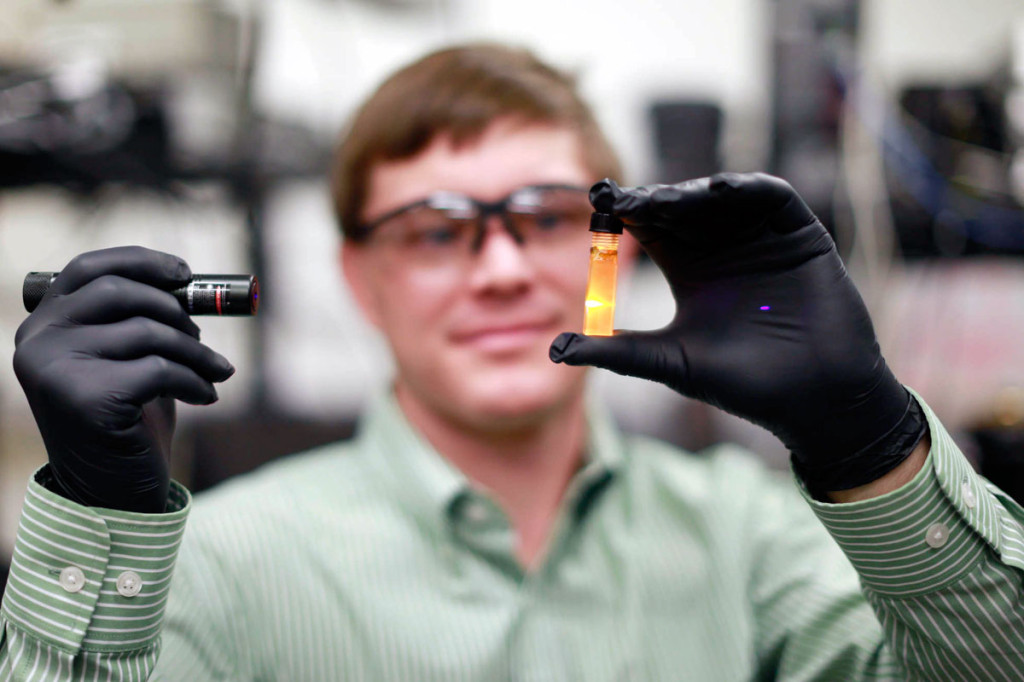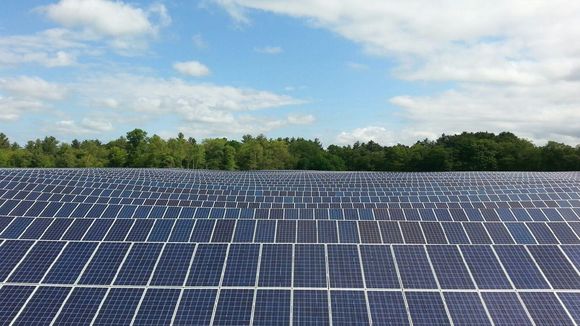Several Chester County schools are among the 25 solar panel grant recipients from the state as part of the Solar for Schools program.
View the Vista.Today article HERE
Several Chester County schools are among the 25 solar panel grant recipients from the state as part of the Solar for Schools program.
View the Vista.Today article HERE
Learn more and register https://www.eventcreate.com/e/solarconference
About this Event
It’s always sunny in Chester County! On-site solar energy for big energy users can save money and help meet sustainability goals. With ample incentives available, 2023/24 is a great time to get the ball rolling on evaluating solar and energy storage options.
At the Solar Adopters Conference attendees will learn about how corporations, office and education campuses, agricultural producers and shopping centers can take advantage of the latest technology, available incentives, RFP guidance, and support from local governments and the electric utility to realize energy price stability, carbon emissions reduction and long-term cost benefits.
Who Should Attend
Business owners/managers, facility managers, and sustainability managers representing the following sectors (and others!) that are considering on-site solar and/or energy storage are encouraged to attend this free event:
As a Bonus…
All registrants have the option to receive a quick analysis of their site’s on-site solar potential – receiving a letter grade raking the solar potential at each address provided. Assessments are done by Station A – a solar RFP organizer, not a solar installer.
Hosted By
Chester County Environmental and Energy Advisory Board
Smart Energy Initiative of Southeastern PA
PA Solar Energy Industries Association
Exton Chamber of Commerce
Western Chester County Chamber of Commerce
Delaware Valley Regional Planning Commission
Agenda
Date: Thursday, January 18
Time: 8:30 am-12pm, with lunch following
Location: nth Innovation Center, 190 West Lincoln Highway, Coatesville, PA 19320
Cost: Free!
From our partners at TMACC we are sharing this event
November 7 at The Desmond Hotel – Below is the URL for the upcoming EV Summit.
https://whova.com/embedded/event/YNaiSyZ04usYwterpz9p8HjnkuPqB%40p67S63TRx2NCo%3D/?utc_source=ems
SEI is sharing an article from eeditioninquirer.com. Going Solar. What you should know before getting rooftop panels installed.
SEI wants to share this Philadelphia Inquirerer article with you!
Read the Daily Local News article below!
SEI has training grant dollars to partially reimburse companies for training their employees for courses that are scheduled from January 1, 2021 – June 15, 2021. Go to https://smartenergypa.org/initiatives/training-funds/ to find out more.
See solar panels up close, ask questions about how solar works, learn about why people in your community made the choice to go solar, and connect with other people in your community who support solar energy.
This event is free and open to the public – everyone is welcome to attend. Whether you are a solar owner, completely new to solar, or somewhere in between – this event is for you. Stop by for a few or stay for a while!
Locations Saturday October 19 will be in Kimberton, West Chester, Downingtown and Coatesville. Check the website for exact times and locations.
Learn more, RSVP, and sign up here to receive Updates and News on Solar Power. https://www.nationalsolartour.org/localtours/chester-county/
Monday November 23rd 2015
From Philly.com:
 Solar panels accounted for one-third of all new electricity generation installed in the United States in 2014, up from just 10 percent two years earlier.
Solar panels accounted for one-third of all new electricity generation installed in the United States in 2014, up from just 10 percent two years earlier.
With interest expected to keep rising, many research groups are on the hunt for ways to boost efficiency.
Among them is a team at the University of Delaware, which is developing materials to harness portions of the sun’s spectrum that in today’s conventional solar panels are largely wasted.
The key is a property of a panel’s semiconductor material called the band gap, an electronic hurdle of sorts. Light particles – photons – with enough energy to clear the bar are converted into electricity, while those with lower energy are lost mostly as heat.
The Delaware researchers believe their materials would combine the energy from two low-energy particles to make one photon with enough energy to clear the hurdle.
The research, funded by a $1 million grant from the Los Angeles-based W.M. Keck Foundation, involves using extremely thin layers of semiconductors to coax electrons to higher energy states.
“We call it the ratchet,” said Delaware’s Matt Doty, an associate professor of materials science and engineering.
It is a perennial industry guessing game to predict which of the next-generation technologies can be made cheaply enough to be worth putting on rooftops.
Solar installations benefit from an investment tax credit that is set to expire next year, though Congress is considering an extension. In an analysis this month, Deloitte Center for Energy Solutions said that true “grid parity,” defined as cost-competitiveness without subsidies, is still years away in most of the country.
But in Pennsylvania, utility-scale solar plants could be competitive with other new power-plant installations as soon as next year, because wholesale power prices here are relatively high, the analysis found.
Doty, along with Delaware colleague Joshua Zide and others, wants to push the technology even further by taking a new stab at an old idea.
Previous efforts to combine the energy from low-energy photons – a concept called photon upconversion – have resulted in poor efficiency.
The Delaware team is tackling the problem by fabricating high-purity, ultrathin films of gallium and indium compounds, deposited in precise amounts with a process called molecular beam epitaxy.
The process is carried out in a vacuum, inside a silvery machine where the pressure is less than one-trillionth that of the air on the Earth’s surface, said Zide, an associate professor of materials science and engineering at Delaware.
Numerical models suggest that solar panels made with this method and configuration of compounds could, in theory, achieve efficiencies in the high-30 percent range, Doty said. Conventional silicon-based solar panels, by comparison, are generally no more than 22 percent efficient.
But the molecular-beam method is expensive, so at the same time Delaware is experimenting with another way of combining the energy from low-energy photons that is cheaper, though not as efficient.
This parallel approach involves creating a solution of tailored nanoparticles that could be applied to the back of solar panels like paint.
The paint might boost conventional panel efficiency by 3 percentage points, to 25 percent, or more, Doty hopes.
Monday, November 16th 2015
From Vista.Today:
 In an attempt to improve its carbon footprint, Allen Harim Foods has decided to go green. The poultry producer broke ground on Monday near its Harbeson processing plant, on what is likely to become one of the largest solar farms in Delaware.
In an attempt to improve its carbon footprint, Allen Harim Foods has decided to go green. The poultry producer broke ground on Monday near its Harbeson processing plant, on what is likely to become one of the largest solar farms in Delaware.
To achieve this, the company has signed a 20-year deal with project developer SolarSense, an affiliate of Berwyn based Alternative Energy Development Group. As per the lease agreement, Allen Harim Foods will purchase the 2.3 million kilowatts hours of power that are expected to be produced by the solar farm each year. This should reduce the company’s carbon dioxide emissions by around 1,616 metric tons.
The plant is expected to receive around 11% of its energy from a 1.57-megawatt photovoltaic solar panel array and Chris Fraga, the CEO of Alternative Energy Development Group, said that “this project is projected to save Allen Harim around 16 percent in energy costs during the first year of operation.”
The solar array is expected to stretch the length of four and a half football fields on a 6-acre parcel near Allen Harim’s Harbeson plant off Harbeson Road, with construction planned to last 3 months, barring unexpected weather issues.
“This project is in line with our strategic goals of environmental sustainability moving forward in Delaware,” said Allen Harim CEO, Steve Evans. He added “we’re trying to be competitive and one of the ways to be competitive is what’s your cost and anything you can do to try to get cost reductions and change your mix, all those things help us sustain ourselves long term.”
Read more at Vista.Today…